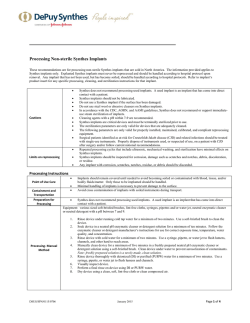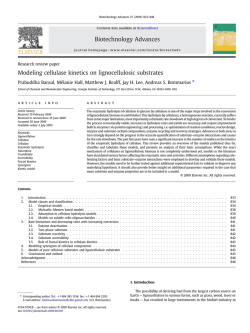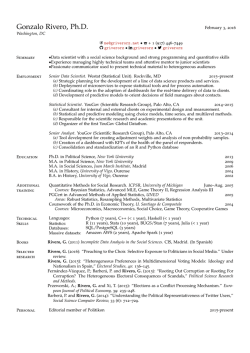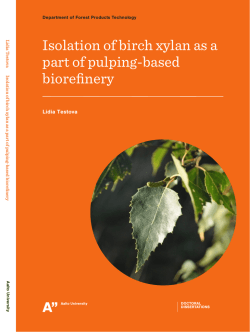
Libro 1.indb
3.17 ENZYMATIC GENERATION oF XYLOSE FROM CORNCOB FOR Xylitol production Pérez-Bibbins, B.1 Pérez-Rodríguez, N.1 Araújo-Oliveira, F.M.2 Belo, I.2 Torrado Agrasar, A.1 Domínguez, J.M.1 C orncob is an interesting lignocellulosic subproduct obtained from maize, whose importance lies on the high production of this cereal as the main diet contributor on several countries as México or Brazil. The high xylose content of corn hemicelluloses makes this waste a largely available renewable source of xylose for obtaining high value-added products by means of biotechnological processes. The production by yeast fermentation of xylitol, a pentitol with high sweetening power and anticariogenic properties suitable for diabetics, is a good example of this strategy of valorization, whose successfulness depends on the extent of the corn xylan hydrolysis to xylose. Although acid and hydrothermal treatments have shown good efficiencies, the enzymatic hydrolysis offers the advantage of avoiding the generation of microbial inhibitors as hydroxymethylfurfural and furfural. Complete enzymatic xylan hydrolysis is hindered by hemicellulose heterogeneity among different lignocellulosic materials, which makes necessary the use of enzymatic mixtures including xylanases, arabinosidases and feruloyl esterases among others. The aim of this work was the comparison of the performance of commercial enzymes and a fungal extract obtained by solid-state fermentation of corncob by Aspergillus niger, for the enzymatic generation of xylose 1 Department of Chemical Engineering, Faculty of Sciences, University of Vigo (Campus Ourense), As Lagoas s/n, 32004 Ourense, SPAIN. Email: [email protected] 2 IBB – Institute for Biotechnology and Bioengineering, Centre of Biological Engineering, University of Minho, Campus de Gualtar, 4710–057 Braga, Portugal. II Congreso Iberoamericano sobre Biorrefinerías 577 from corncob and subsequent fermentation by Debaryomyces hansenii for the production of xylitol. The better degrees of xylan hydrolysis were obtained when the Aspergillus extract and Ultraflo® L (Novozymes), both containing feruloyl esterase activity, were used. Although Ultraflo showed higher ability for generating reducing sugars, the Aspergillus extract was more efficient than the commercial enzyme for producing xylose. These results point to the interest of using enzymatic extracts for corncob xylan to xylose hydrolysis that are specifically produced by microorganisms grown on the same material to be hydrolyzed. Keywords: corn cob, enzymatic hydrolysis, xylitol, xylose 578 2nd Iberoamerican Congress on Biorefineries
© Copyright 2025




